|
|
| |
| |
|
|
|
|
|
|
|
|
| |
| |
| |
| |
| |
| |
| |
| |
| |
| |
|




| |
| |
|
Tell them you found it on anvilfire.com!
|
Blacksmithing and metalworking questions answered.
|
Anvils,
Amboß,
l'enclume,
incudine,
el yunque, bigornia,
städ,
incus,
aambeeld,
batente
|
|
|
 The Pexto stakes above are no longer available in these exact patterns.
Those from the Lynch Collection are rare unusual stakes that are only found as hand or special made.
Stake a called a "Marley Stake" is of unknown purpose, perhaps texturing repousse'.
The Pexto stakes above are no longer available in these exact patterns.
Those from the Lynch Collection are rare unusual stakes that are only found as hand or special made.
Stake a called a "Marley Stake" is of unknown purpose, perhaps texturing repousse'.
 This collection from an old Dixon catalog is used mostly in repousse', raising, armour and other artistic work.
Artistic application stakes are much less available than the more industrial type but some of these are still made.
The round nosed stake was popularized in the book
Techniques of Medieval Armour Reproduction The 14th Century
and is seen in other references such as
Metalwork Technology and Practice,
Working in Metals
This collection from an old Dixon catalog is used mostly in repousse', raising, armour and other artistic work.
Artistic application stakes are much less available than the more industrial type but some of these are still made.
The round nosed stake was popularized in the book
Techniques of Medieval Armour Reproduction The 14th Century
and is seen in other references such as
Metalwork Technology and Practice,
Working in Metals
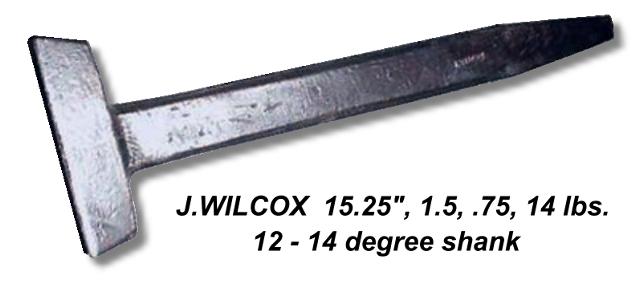
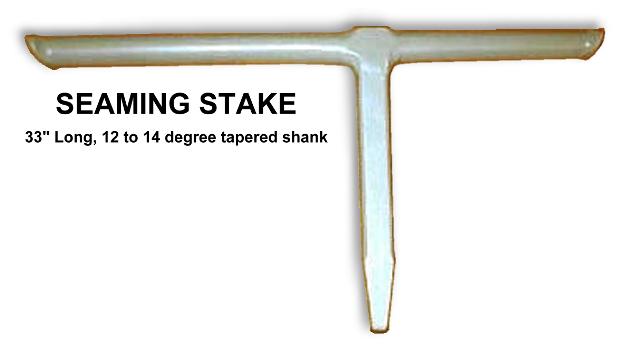
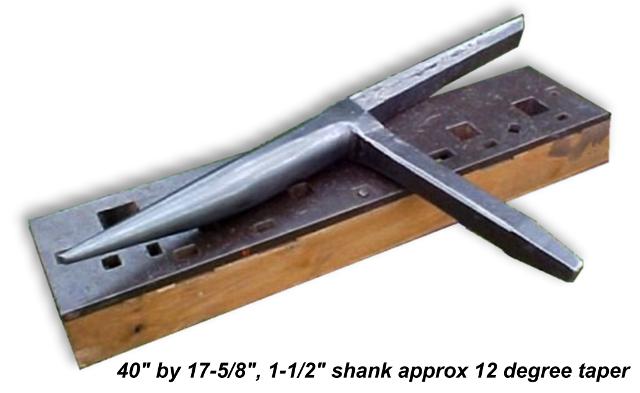
Large Beakhorn Stake, Photo from Matchless Antiques
Stake Tapers vary, there is no standard.
However, the three stakes above show a typical taper of 10 to 14 degrees found on many old stakes.
Some modern makers such as Peddinghaus use much lower tapers and those machining them prefer low angles to reduce the work load.
There is little difference between Stake Anvils, Stakes, T-Stakes and Bickerns.
Their tapered shanks serve the same purpose, to mount the tool in a stump or tool holder.
They are all primarily for cold working thin plate of sheet metal.
Some are for industrial fitting of joints and others for artistic forming of the metal.
Stakes should not be confused with anvil tools which are often similar in shape and variety.
Anvil tools have strait shanks to fit the hardy hole.
Wedging tapered shanks into the hardy hole can result in stuck or broken tools or worse, a broken anvil.
Stake anvils were some of the earliest tools dating from the Bronze Age.

Above, an engraving of a Bronze Age anvil found in France at Fresné la Mère from,
John Evans in Ancient Bronze Implements of Great Britain 2.
It is a typical multipurpose Bronze Age anvil.
It can be used in two positions the metal in the stake not wasted as it is also one of the work surfaces.
The Antiquity of the Swage Block : A History - Jock Dempsey, Swageblocks.com
Originally used for soft metal work, stakes evolved into tools with hard steel faces for working iron.
Simple stakes for raising can be just a straight or bent steel bar set into a wood block (stump).
More sophisticated tools are made for special purpose.
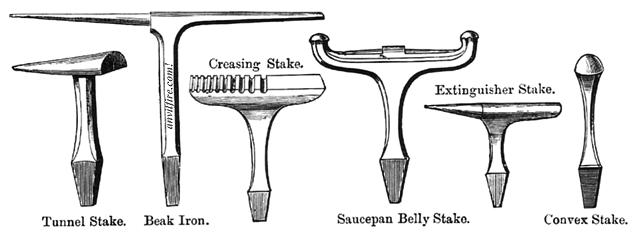
19th Century Style Stakes from Hasluck's Metal Working
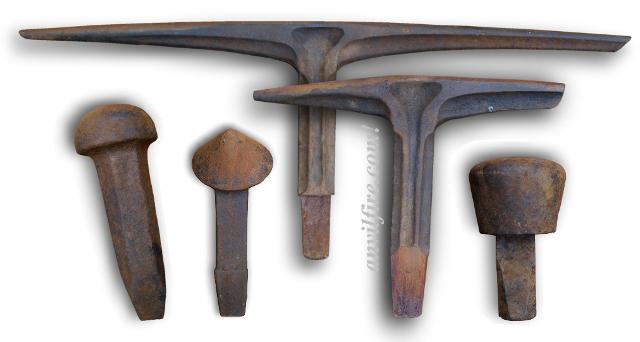
Stake names are either descriptive of their shape, what they were designed to make or the type of worker that used them.
North American names may not be the same as European names. A list of stake names. . .
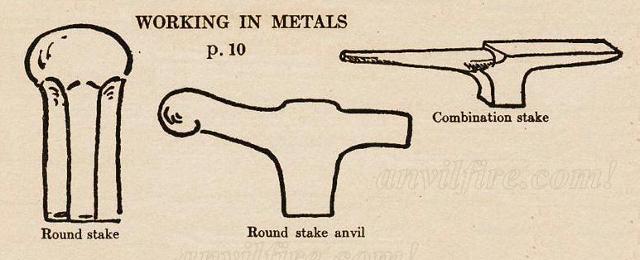
Illustrations from the young adult book Working in Metals
Links:

Andy Mason Tool Collection (27 stakes 2 anvils)
Unique English or Continental stakes, another 'S' anvil and an ancient wrought iron stake.

Cranbrook Cow's Tongue Stake
An interesting tool from the Frank Turley Collection.
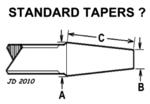
Stake Shank Taper Poll
Help us collect data on stake shank tapers.
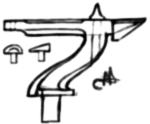
Anvil and Stake Making Sketches
From the guru's sketch book.
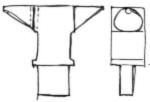
Flame Cut Stake Making Plan
From the guru's sketch book.
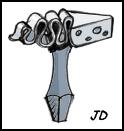
"Steak" Anvil Humor
From the anvilfire comic page featuring Frank Tabor, The Great Nippulini and others.
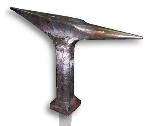 Stake anvil by Stefaan Meeus
Stake anvil by Stefaan Meeus
Stake anvil made by Stefaan Meeus of Belgium in 2009.

Old Armourers or Braziers Stake Anvil
A beautiful tool of many unknowns.
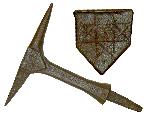
Classic European Stake Anvil
16th Century stake from the Lyda-Ferdinand Collection.

Tall Stake Anvil
From the Old Millstone Forge Museum Collection.
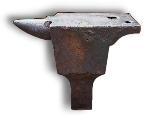
Stake or Ship's Anvil
From the collection of Burnt Forge.
|

|
|










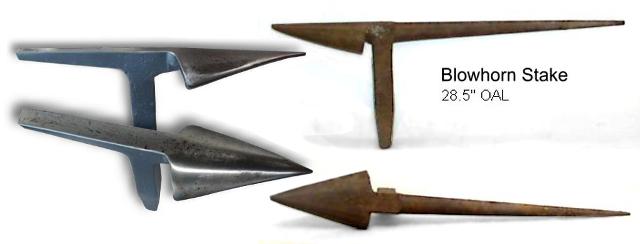
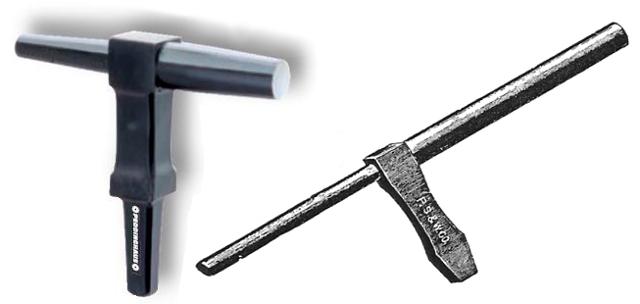

 The Pexto stakes above are no longer available in these exact patterns.
Those from the Lynch Collection are rare unusual stakes that are only found as hand or special made.
Stake a called a "Marley Stake" is of unknown purpose, perhaps texturing repousse'.
The Pexto stakes above are no longer available in these exact patterns.
Those from the Lynch Collection are rare unusual stakes that are only found as hand or special made.
Stake a called a "Marley Stake" is of unknown purpose, perhaps texturing repousse'.
 This collection from an old Dixon catalog is used mostly in repousse', raising, armour and other artistic work.
Artistic application stakes are much less available than the more industrial type but some of these are still made.
The round nosed stake was popularized in the book
This collection from an old Dixon catalog is used mostly in repousse', raising, armour and other artistic work.
Artistic application stakes are much less available than the more industrial type but some of these are still made.
The round nosed stake was popularized in the book













städ, incus, aambeeld, batente